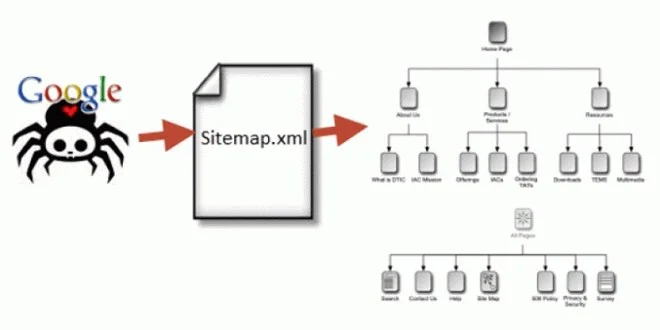

What is XML Sitemap?
An XML sitemap is a file that lists all the pages on a website that are available for crawling by search engine bots. It is an XML file that contains a list of URLs along with additional metadata that helps search engines understand the structure of the website.
The purpose of an XML sitemap is to make it easier for search engines to index a website's content. By providing a list of all the pages on a website, including those that might be hard to find through normal navigation, an XML sitemap helps ensure that all of a website's content is included in the search engine's index.

Uses of XML Sitemap
An XML sitemap provides several benefits to a website, including:

Better crawlability: By providing a list of all the pages on a website, an XML sitemap helps ensure that search engines can find and crawl all of a website's content. This can help improve a website's visibility in search engine results pages.
Improved indexing: An XML sitemap provides additional metadata about each page on a website, such as the date it was last updated and how important it is relative to other pages on the website. This information can help search engines prioritize which pages to index first.
Increased accuracy: An XML sitemap helps ensure that search engines have an accurate view of a website's structure and content. This can help prevent search engines from indexing duplicate content or missing important pages.
Faster indexing: By providing a comprehensive list of all the pages on a website, an XML sitemap can help search engines quickly find new or updated content.
How to submit XML Sitemap?
Submitting an XML sitemap to search engines is a simple process that can help improve a website's visibility in search results. Here's how to submit an XML sitemap step by step:

Step 1: Create an XML sitemap
Before submitting an XML sitemap, you'll need to create one. There are several tools available that can help you create an XML sitemap, including online generators and plugins for popular content management systems like WordPress.
Step 2: Validate the XML sitemap
Before submitting the XML sitemap to search engines, it's important to validate it to ensure that it meets the required format and contains all the necessary information. There are several free online XML sitemap validation tools available that can help with this step.
Step 3: Upload the XML sitemap to the website's root directory
Once the XML sitemap has been validated, it needs to be uploaded to the website's root directory. This is typically done using FTP or a file manager provided by the web host.
Step 4: Submit the XML sitemap to search engines
Once the XML sitemap has been uploaded to the website's root directory, it's time to submit it to search engines. The process for submitting an XML sitemap can vary depending on the search engine, but typically involves logging in to a webmaster tools account and submitting the sitemap using the provided tools.
For example, here's how to submit an XML sitemap to Google:
Step 1: Log in to Google Search Console
Step 2: Select the website you want to submit the XML sitemap for
Step 3: Click on the "Sitemaps" menu on the left-hand side
Step 4: Click on the "Add/Test Sitemap" button in the top right corner
Step 5: Enter the URL of the XML sitemap (e.g., https://www.example.com/sitemap.xml)
Step 6: Click on the "Submit" button
Once the XML sitemap has been submitted, it may take some time for search engines to crawl and index all of the pages listed in the sitemap. However, by submitting an XML sitemap, website owners can help ensure that search engines have an accurate view of their website's structure and content, which can ultimately lead to improved visibility in search engine results pages.
It's also important to note that XML sitemaps should be updated regularly to ensure that search engines have an up-to-date view of a website's content. This is especially important for websites with frequently changing content or large numbers of pages.
In addition to submitting an XML sitemap to search engines, website owners can also use other tools and strategies to improve their website's visibility in search results. These might include optimizing on-page content, building backlinks, and using social media to drive traffic to the website.
Conclusion
Overall, an XML sitemap is a powerful tool for improving a website's visibility in search engine results pages. By providing a comprehensive list of all the pages on a website, including those that might be hard to find through normal navigation, an XML sitemap helps ensure that all of a website's content is included in the search engine's index. By following the steps outlined above, website owners can easily create and submit an XML sitemap, and improve their website's visibility in search results